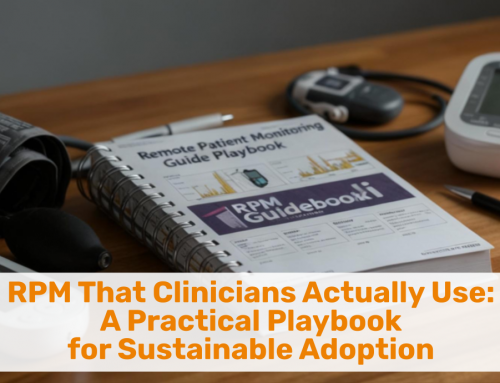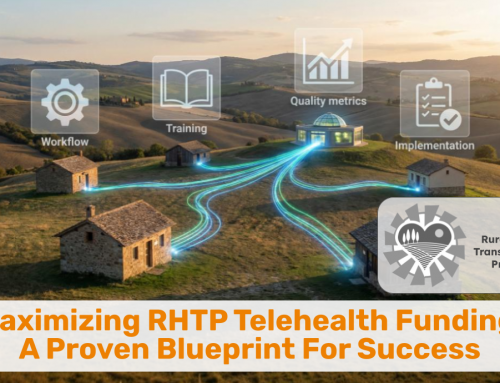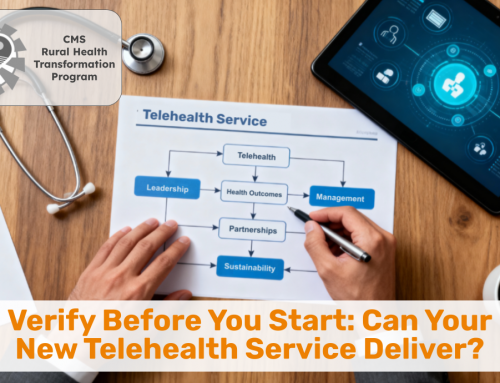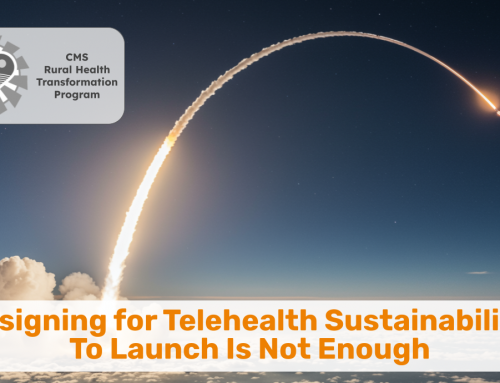While telehealth in an integrated, hybrid care environment enjoys a high percentage of utilization in behavioral health and specialty care, most primary care providers are still, for the most part, eschewing the use of video visits.
In addition to the usual root causes of low telehealth adoption (including user-unfriendly technology, workflows that are not optimized for video visits, lack of webside manners training, and no readily available support), one key “explanation” is the notion that conducting a physical exam over video seems impossible. Not to mention that in this day and age, with all kinds of diagnostic tests available, physical examinations are almost never the sole “exam” upon which a diagnosis and treatment plan are based.
But still, it is worth exploring: Can clinicians perform physical exams even when they are not in the room with the patient? Or, to take it one step further: Can I truly make an accurate diagnosis without a hands-on assessment?
These are fair questions. For centuries, physical exams have been a cornerstone of medical practice.
But as we’ve covered numerous times, not every clinical scenario requires a 1:1 replication of in-person workflows. Instead, we need to rethink and adapt—leveraging technology, patient participation, and clinical reasoning to perform meaningful assessments remotely.
To provide true clinical expertise on the subject, I turned to our Chief Clinical Officer, Matt Faiman, MD, who provided the substance for this week’s Telehealth Tuesday.
Rethinking the Physical Exam
Whether in telehealth or in-person care, many diagnostic pathways remain unchanged, regardless of whether the patient is sitting in an exam room or at home.
Consider a patient presenting with abdominal pain: if the next step is an ultrasound, does it truly matter where the initial evaluation took place? The key is to use clinical judgment—if a remote exam isn’t sufficient, escalate or refer to an in-person visit accordingly. In telehealth, as in any healthcare setting, it is never a “take it or leave it” approach. We can always triage, refer, or escalate as needed.
But in many cases, a well-structured virtual physical exam can provide the necessary information to guide care decisions.
Which brings us back to the original question: Can you conduct a physical exam via telehealth? The answer is a resounding yes—and not only can you, but you should!
The Patient as a Partner in Their Own Exam
Sir William Osler, one of the fathers of modern medicine, famously said, Listen to your patient—he is telling you the diagnosis. He also emphasized the importance of laying hands on the patient. In telehealth, while we can’t physically touch, we can guide patients to participate in their own examinations, fostering engagement and enhancing clinical insight.
Patients are often eager to take an active role. Many virtual exam techniques align with what we already do in practice. Think about diagnosing poison ivy dermatitis—while the diagnosis is often clear at a glance, you still take a moment to listen to the heart and lungs because it’s expected. The same principle applies in virtual care: guiding patients through an exam adds credibility, reassurance, and clinical value.



Adapting the IPPA Framework for Telehealth
Medical students are trained in the classic physical exam technique: Inspection, Palpation, Percussion, and Auscultation (IPPA). While we may need to modify certain elements for virtual care, the core approach remains relevant. Here’s how we can adapt it:
Inspection: Careful observation is fundamental in telehealth. Assessing body language, speech patterns, breathing effort, and signs of distress can provide valuable diagnostic clues. Is the patient able to complete full sentences? Are they coughing persistently? Does their facial expression suggest pain or discomfort? These details matter regardless of the care modality.
Palpation: Under guided instruction, patients can often perform self-examinations. For example:
-
Lymph nodes: Ask the patient to feel their neck and describe what they notice — does it feel like grapes, marbles, or golf balls?
-
Abdominal exam: Have them divide their abdomen into four quadrants and press gently, noting areas of tenderness.
-
Jump test: A simple maneuver — asking the patient to jump up and down three times—can be surprisingly effective in assessing conditions like appendicitis or cholecystitis.
-
Pulse assessment: Patients can locate their radial or carotid pulse, count beats aloud, and describe the rhythm. An irregular or rapid pattern may indicate an underlying cardiac issue.
Percussion & Auscultation: While direct auscultation isn’t possible without specialized virtual exam devices (such as a digital stethoscope), we can still assess respiratory function:
-
Ask the patient to take a deep breath and exhale forcefully, listening for wheezing or prolonged expiration.
-
Observe how they speak — shortness of breath while talking can be a red flag for respiratory compromise.
Documentation Matters
Even more important than the exam itself is proper documentation.
A well-documented virtual physical exam serves multiple purposes. If care is escalated, these findings provide a crucial baseline for comparison.
Additionally, thorough documentation strengthens the medical record—because as legal experts remind us, if it isn’t documented, it didn’t happen.
Enhancing the Patient Experience
Beyond its clinical utility, the virtual physical exam builds patient trust. Telehealth visits, which tend to cut short personal chit-chat, can often feel rushed or transactional. A quick routine exam not only increases the credibility of the visit, but it could also, in some cases, uncover new clinical information that might have otherwise been missed.
Integrating a virtual exam — even a simple one — into your telehealth visits demonstrates that virtual care is more than just a conversation; it’s a true, full-fledged medical encounter.
Teaching clinicians how to effectively integrate these techniques ensures we continue to deliver empathetic, high-quality care in the digital age. Patients expect it, and as clinicians, we should expect it from ourselves.
Time to Upskill
Dr. Matt Faiman, who was previously the Medical Care Director of Express Care Online at the Cleveland Clinic, has long championed the value of structured virtual exams.
His insights remind us that clinical excellence in telehealth isn’t just about recreating in-person workflows — it’s about reimagining them. By refining our virtual assessment skills, we can expand the reach of high-quality care and confidently navigate the evolving landscape of digital health.
How are you training your clinicians on the use of virtual exams? Contact us to explore training for your clinicians.








To receive articles like these in your Inbox every week, you can subscribe to Christian’s Telehealth Tuesday Newsletter.
Christian Milaster and his team optimize Telehealth Services for health systems and physician practices. Christian is the Founder and President of Ingenium Digital Health Advisors where he and his expert consortium partner with healthcare leaders to enable the delivery of extraordinary care.
Contact Christian by phone or text at 657-464-3648, via email, or video chat.






